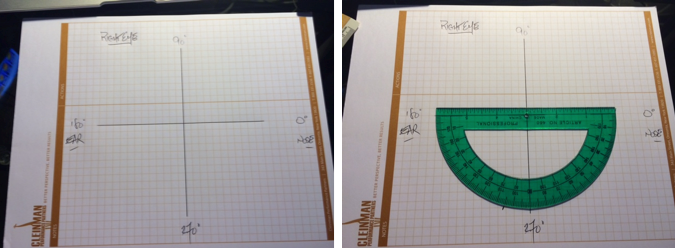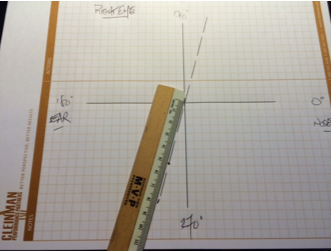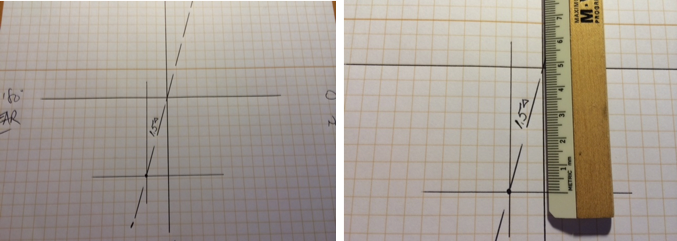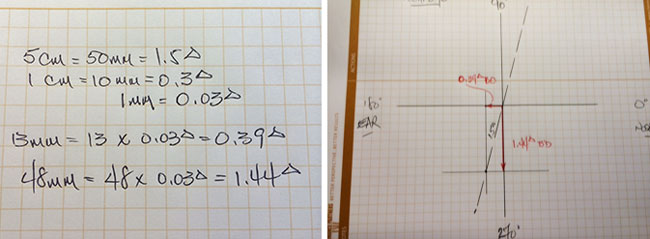The Opticians Handbook received this question about a prism Rx for a patient experiencing vertigo:
"I recently got a prescription where the doctor asked for 1.5 degrees of prism base down at axis 255 right and 1.5 degree base down in the left at axis 255. What should I order? The doctor told me to order 1.1 base down with 0.50 Base Out right and 1.1 Base Down with 0.50 Base In."
There are two ways to order these lenses and, each produces the same lenses for the order. Prism can be specified in either Rectangular Coordinates (the ones we're most used to) or as Polar Coordinates. First, we'll talk about Polar Coordinates since that's the actual prism determined during the eye exam.
POLAR COORDINATES
Polar Coordinates specify the amount of prism needed at an axis using a 360 degree scale. Get a piece of graph paper and you'll see what I mean. Draw a cross, specify R or L eye (zero degrees is always on the left of the patient's eye), add 0°, 90°, 180°, 270°, and 360° (same as 0°) to the graph.
Get a protractor and find 255°. In this case, the angle is past 180° so turn the protractor upside down and find 255° (that's 75° plus 180°). Make a mark at that point.

Then, draw line along the 255 axis. This makes it easy to see the direction of the prism for the patient i.e., 255° Base Down and Base Out for the right eye.
Place your mm rule along the line and make a mark for the amount of prism. The easiest is to use 10mm to represent 1∆ (prism diopter) so the answers can be read in tenths directly from the mm scale. In this case, to shorten the line for pics, I chose 50mm (5cm) to represent 1.5∆ or 0.03∆ per mm. This is exactly what you want the lab to produce for the patient: 1.5∆ at 255° Base Down and Base Out for the right eye.
Order the lenses from the lab, exactly like this. It turns out that prism in the lab is calculated by the computer software in polar coordinates anyhow so they understand this very well.
RECTANGULAR COORDINATES
Ah, this is what is familiar to us. Polar coordinates can be converted to rectangular coordinates (In, Out, Up, Down) by continuing to use the graph that we've begun.

Complete the rectangle that uses the 255 line and the 1.5 point. The horizontal length of the rectangle is the amount of Base Out prism needed; the vertical length is the Base Down prism (down and out prism because of the resulting quadrant of the graph where the line ends).

Measure the lengths horizontally and vertically and convert to the approximate amounts of prism.

Or, visit Opticampus by the late Darryl Meister for an online calculator at www.opticampus.com.













